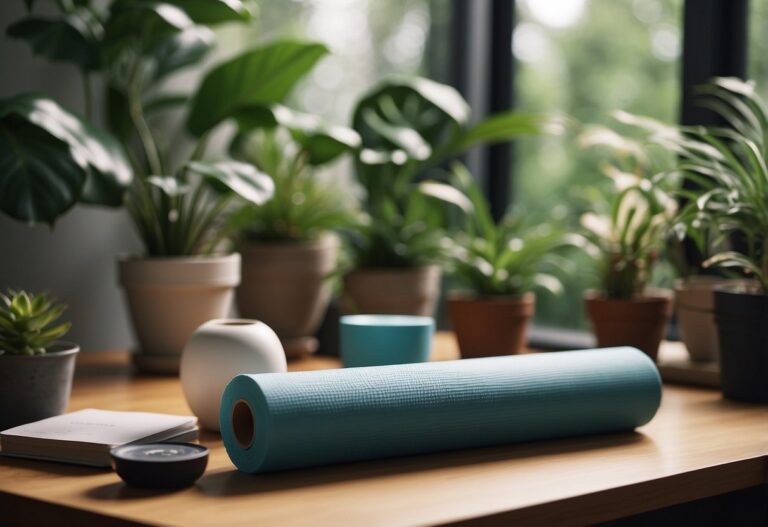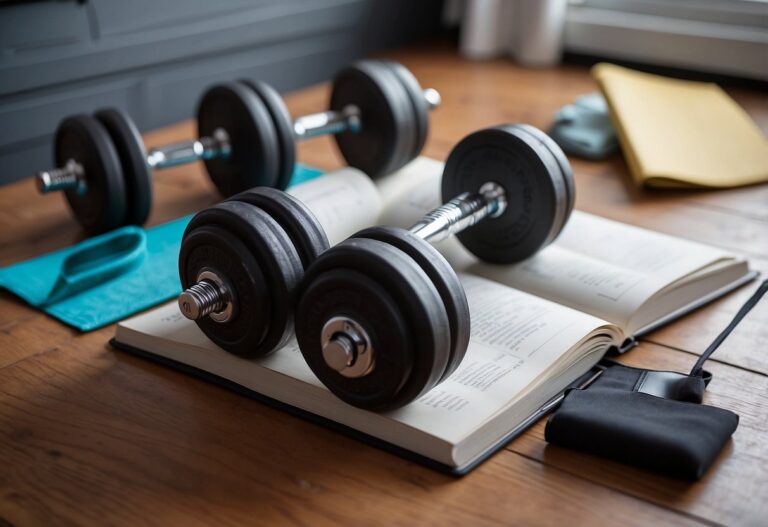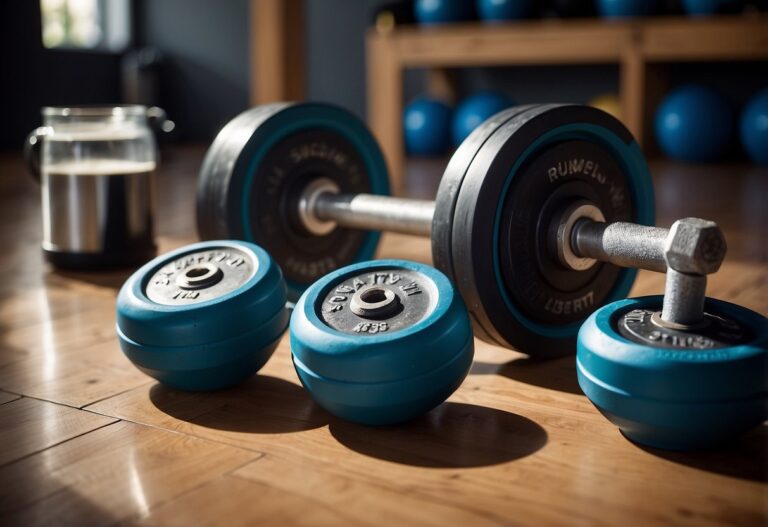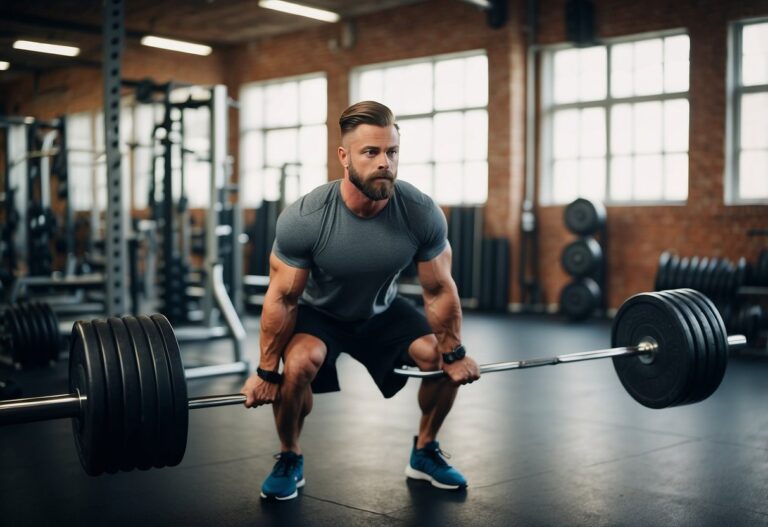A V-taper physique often marks the difference between a good and great body shape. It’s characterised by broad shoulders tapering down to a smaller waist, creating that desirable “V” shape which many fitness enthusiasts strive for. If you’re wondering how to achieve this look, you’re in the right place. This article offers accessible and effective tips to help you build and enhance your V-taper.
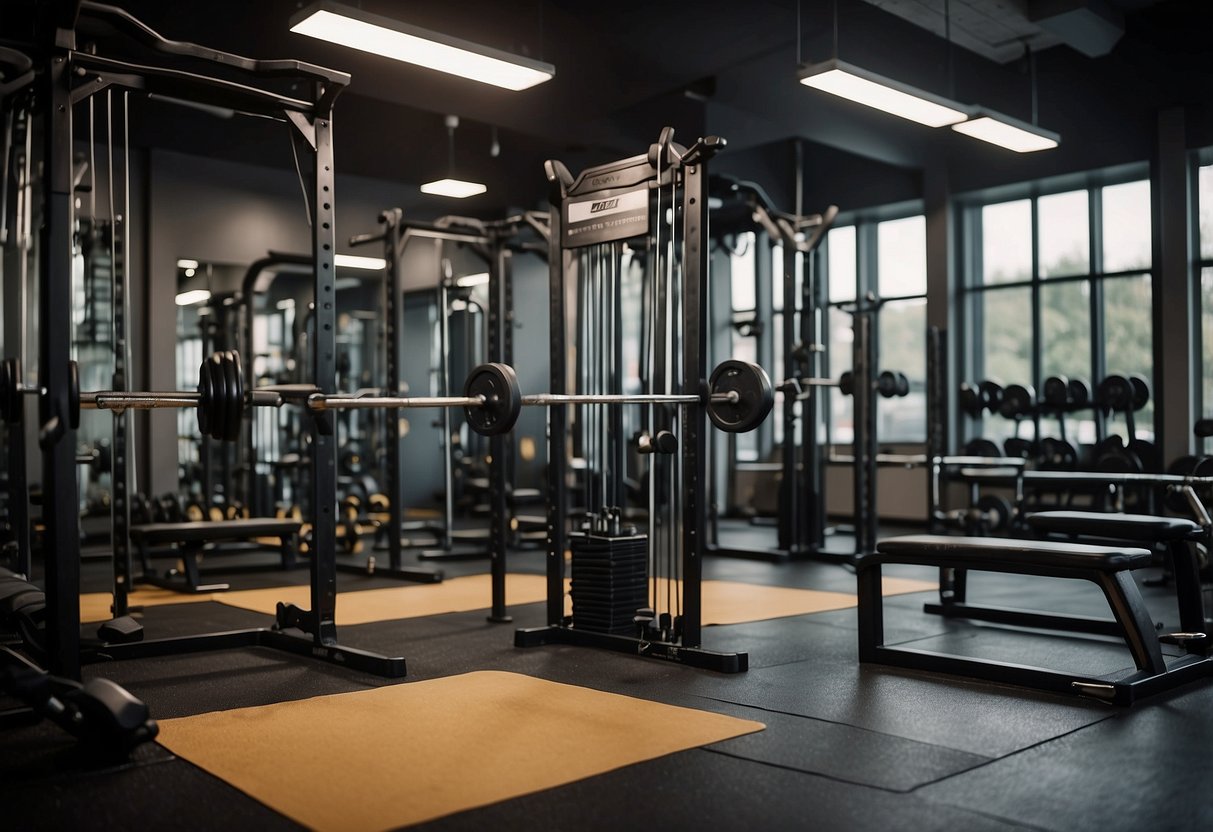
Whether you’re new to the gym or a seasoned athlete, aiming for a V-taper can help you feel stronger and more confident. From workouts focusing on specific muscle groups to nutrition advice, you’ll find practical insights that fit into your routine. Transforming your body requires commitment, but with the right guidance, you’re set to see meaningful results.
Lat Pulldown
If you want to develop your back for a V-taper shape, the lat pulldown is an excellent exercise. It targets the latissimus dorsi, or lats, which are key muscles for that wide, impressive look.
You can perform this exercise with a wide grip to focus on the upper parts of your lats. This helps build the outer width of your back.
Another variation is the V-bar pulldown, which can improve the centre of your back. By changing grips and angles, you can target different parts of your lats for balanced muscle development.
Seated Row
The seated row is a fantastic exercise for strengthening your back muscles, particularly the lats and rhomboids. To perform this exercise, you sit on a bench, grip the handles attached to a cable machine, and pull towards your torso, squeezing your shoulder blades together.
Start with a moderate weight to get the form right. Sit with your back straight and feet firmly planted on the foot platform. Pull the handles towards you, keeping your elbows close to your body. Focus on your back muscles doing the work, rather than your arms.
It’s essential to avoid rounding your back during the movement, as this can lead to injury. Instead, maintain a neutral spine and controlled movement throughout. Try incorporating seated rows into your routine to help build a strong, well-developed back and achieve that sought-after V-taper.
For more detailed advice, check out the comparison of lat pulldowns vs. seated rows to ensure you use proper techniques and get the best results.
Bent-over row
The bent-over row is a brilliant exercise for building your back muscles. It primarily targets the lats, but also works your deltoids and erector spinae. This helps in developing a broad and thick back.
To perform a bent-over row, you need to stand with your feet shoulder-width apart, hold a barbell with an overhand grip, and bend slightly at the hips.
Pull the barbell towards your lower chest while keeping your back straight. Make sure to squeeze your shoulder blades together at the top of the movement. This will help in really engaging your back muscles.
It’s important to start with a manageable weight and focus on proper form to prevent injury. You can progressively increase the weight as you get stronger.
Pull-ups
Pull-ups are a fantastic way to build your V-taper physique. They primarily target your latissimus dorsi muscles, giving you that desired wide back.
When you do pull-ups, focus on driving your elbows down. This helps engage your lats more effectively. Try to avoid herky-jerky movements. Instead, use a full range of motion to maximise muscle tension.
Don’t forget to mix in variations like chin-ups. These not only hit your lats but also work your biceps. Gradually increase your rep count to challenge yourself and track your progress for consistent gains.
Deadlifts
Deadlifts are a fundamental exercise for building overall strength and muscle mass. While they can add size to your back and legs, be aware that they might not be ideal for achieving a perfect V-taper. The reason is that they can sometimes widen your waistline.
If you’re focused on a V-taper, you may consider moderating their use. Alternatively, focus on other exercises targeting your shoulders and lats to maintain a narrow waist and broad upper body.
Incorporating deadlifts occasionally is still beneficial. Just make sure to balance them with other exercises that enhance the V-taper shape if that is your primary goal.
Dumbbell Side Lateral Raises
Dumbbell side lateral raises are a fantastic exercise for building your shoulder strength. They focus on the lateral deltoid muscles, which are key to achieving that V-taper look.
When you perform this exercise, make sure to lift the dumbbells slightly in front of your body. This reduces the risk of injury and ensures the lateral delts, not the traps, do most of the work.
Performing this move seated helps eliminate hip-thrust momentum. This allows you to better isolate the side delts, thereby making your workouts more effective.
To really feel the burn, use a moderate weight and focus on form rather than how heavy you can lift.
Face Pulls
Face pulls are a fantastic exercise for developing your shoulder and upper back muscles, which are essential for achieving a V-taper.
You can perform face pulls with a cable machine or resistance bands.
Stand with your feet shoulder-width apart, and pull the handles towards your face, keeping your elbows high and wide.
Keep your back straight and engage your core throughout the movement.
Aim for 3 sets of 12-15 reps. This will help improve your posture and build those key muscles.
Swapping to higher resistance bands as you get stronger will keep the challenge.
Single-arm dumbbell row
The single-arm dumbbell row is a great exercise for building a strong back. It primarily targets the lats, but it also works the shoulders, biceps, and core.
To perform this exercise, start by placing one knee and one hand on a bench for support. Hold a dumbbell in the opposite hand, keeping your back straight.
Pull the dumbbell up towards your hip, squeezing your shoulder blade at the top of the movement. Lower the dumbbell back down in a controlled manner.
Doing this exercise correctly can help improve your posture and create that coveted V-taper look.
Wide-Grip Pull-Ups
Wide-grip pull-ups are one of the best exercises for building that classic V-taper physique. Grabbing the bar with your hands wider than shoulder-width helps target your lats more effectively.
To perform a wide-grip pull-up, use an overhand grip and pull yourself up until your chin is above the bar. Lower yourself down slowly to get the most from each rep.
Incorporate these into your routine by aiming for 3-4 sets of 8-12 reps. If you struggle initially, use a resistance band for assistance or have someone spot you. Consistency is key to seeing improvement.
Close-grip pull-ups
Close-grip pull-ups are amazing for building strength in your back and arms.
Start by grasping the pull-up bar with your hands positioned close together. This narrow grip targets not just your lats but also your biceps and forearms.
When you pull yourself up, focus on engaging your back muscles. Try to bring your chest towards the bar and remember to keep your movements controlled.
If you find it challenging at first, consider using an assisted pull-up machine or resistance bands to help you complete the reps.
Regular practice will not only improve your V-taper but also enhance your upper body strength.
Understanding the V-Taper Shape
The V-taper shape creates a striking visual impression and represents balance between broad shoulders and a narrow waist. This section explains the anatomy and aesthetic appeal of achieving this desired figure.
Anatomy of a V-Taper Physique
A V-taper shape focuses on widening the upper body and narrowing the waist. Broad shoulders and a well-developed back, especially the latissimus dorsi muscles, are key.
Deltoids and trapezius muscles add width to the shoulders. Latissimus dorsi gives that broad back effect, connecting from the lower spine to the arms.
A smaller waist is also important. Reducing waist size highlights the contrast with the upper body. Many opt for both weight training and cardio to maintain a lean midsection.
Importance of a V-Taper for Aesthetic Appeal
Achieving a V-taper is more than just building muscle. It enhances symmetry and proportion. Broad shoulders paired with a narrow waist create a visually appealing physique. It’s seen as more fit and athletic.
Competitive bodybuilders and fitness enthusiasts aim for this shape as it’s often judged highly in competitions. Apart from aesthetics, it also contributes to better posture and overall strength.
Working towards a V-taper can also improve confidence, as the aesthetic shift is noticeable and rewarding. You might find that shirts fit better and highlight your improved physique, boosting your self-image.
Effective Workout Strategies
To achieve a perfect V-taper physique, you need to focus on broadening your shoulders while narrowing your waist. This section details how to effectively target the shoulders for added width and develop a strong, defined back.
Targeting the Shoulders for Width
Building broad shoulders is crucial for achieving a V-taper. You want to focus on the deltoids, particularly the lateral or middle deltoid. Exercises such as lateral raises are excellent for this purpose. Perform 3-4 sets of 12-15 reps. Make sure to keep your movements slow and controlled.
Another effective exercise is the overhead press. Whether using dumbbells or a barbell, aim for 3 sets of 8-12 reps. This exercise engages multiple parts of the shoulder, giving you a broader appearance.
Don’t forget about rear deltoid exercises like reverse flyes. These help balance the shoulder development, ensuring a well-rounded look. Include at least 2-3 sets of 12-15 reps. Consistency and correct form are key to avoiding injuries and maximising gains.
Building a Strong, Defined Back
A strong back is essential for a V-taper, complementing your shoulder work. Start with pull-ups or lat pulldowns. These exercises target the upper back and widen the lats. Aim for 3-4 sets of 8-12 reps. Adjust the grip (wide or close) to hit different muscle fibres.
Rows are another must-have in your routine. Incorporate bent-over rows and seated cable rows for a complete workout. Perform 3-4 sets of 10-12 reps for each type. Keep your back straight and engage your core to avoid strain.
Including deadlifts is also beneficial. This compound movement works the entire back, helping to define and strengthen it. Execute 3 sets of 6-8 reps. Make sure to lift with proper form to prevent injury. Persistence and attention to detail will help you make significant progress.
By focusing on these exercises for your shoulders and back, you can achieve a more pronounced and defined V-taper physique. Always remember to prioritise form over weight and to stay consistent with your routine.
Optimising Nutrition and Recovery
Focusing on your diet and recovery plan can help you build a strong V taper. Proper nutrition fuels muscle growth, while effective recovery prevents injuries.
Nutritional Tips for Muscle Growth
Eating the right foods is crucial for muscle development. Start by incorporating lean proteins like chicken, turkey, and fish into your meals. These proteins help repair and build muscle tissue. Carbohydrates such as brown rice, oats, and sweet potatoes are also important. They provide the energy you need for intense workouts.
Hydration is another key factor. Drinking enough water supports muscle function and prevents dehydration. You should also include healthy fats, like those from avocados and nuts, to support overall health. Consider what you eat before and after working out. Eating a balanced meal with protein and carbohydrates before a workout can boost your energy.
Recovery Techniques to Prevent Injury
Proper recovery keeps your muscles strong and injury-free. First, make rest a priority. Allow your muscles time to heal by incorporating rest days into your routine. Overtraining can lead to injuries and long-term issues. Stretching also plays a vital role in recovery. Including stretching exercises in your cooldown can enhance flexibility and reduce muscle soreness.
Massage and foam rolling are excellent techniques to aid recovery. Massaging your muscles can improve blood flow, which helps flush out toxins and reduces stiffness. Foam rolling can loosen up tight muscles and prevent injury. Ensure you get enough sleep, as it’s essential for muscle repair and overall recovery. Aim for 7-9 hours of quality sleep each night to support your fitness goals.


